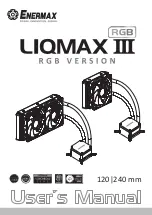
Chapter 5
Adding Components for Special Functions
SCB-68 Shielded Connector Block User Manual
5-6
ni.com
Differential Open Thermocouple Detection
Use position A to connect a high-value resistor between the positive input
and +5V. Leave the jumpers in place (positions F and G) for each channel
used.
Single-Ended Open Thermocouple Detection
Use position A for one channel and C for the next channel when you
connect a high-value resistor between the positive input and +5V. Leave
the jumpers at positions F and G in place for each channel used.
Sources of Error
When making thermocouple measurements with the SCB-68, the possible
sources of error are compensation, linearization, measurement, and
thermocouple wire errors.
Compensation error can arise from two sources—inaccuracy of the
temperature sensor and temperature differences between the temperature
sensor and the screw terminals. The temperature sensor on the SCB-68 is
specified to be accurate to ±1 °C. You can minimize temperature
differences between the temperature sensor and the screw terminals by
keeping the SCB-68 away from drafts, heaters, and warm equipment.
Thermocouple output voltages are nonlinear with respect to temperature.
Conversion of the voltage output to temperature using either look-up tables
or polynomial approximations introduces linearization error. The
linearization error is dependent upon how closely the table or the
polynomial approximates the true thermocouple output. For example, you
can reduce the linearization error by using a higher degree polynomial.
Measurement error is the result of inaccuracies in the DAQ device. These
inaccuracies include gain and offset. If the device is properly calibrated, the
offset error should be zeroed out. The only remaining error is a gain error
of ±0.08% of full range. If the input range is ±10 V and the gain is 500, gain
error contributes 0.0008
×
20 mV, or 16
µ
V of error. If the Seebeck
coefficient of a thermocouple is 32
µ
V/°C, this measurement error adds
0.5 °C of uncertainty to the measurement. For best results, you must use a
well-calibrated DAQ device so that offsets can be ignored. You can
eliminate offset error, however, by grounding one channel on the SCB-68
and measuring the voltage. You can then subtract this value, the offset of
the DAQ device, in software from all other readings.















































